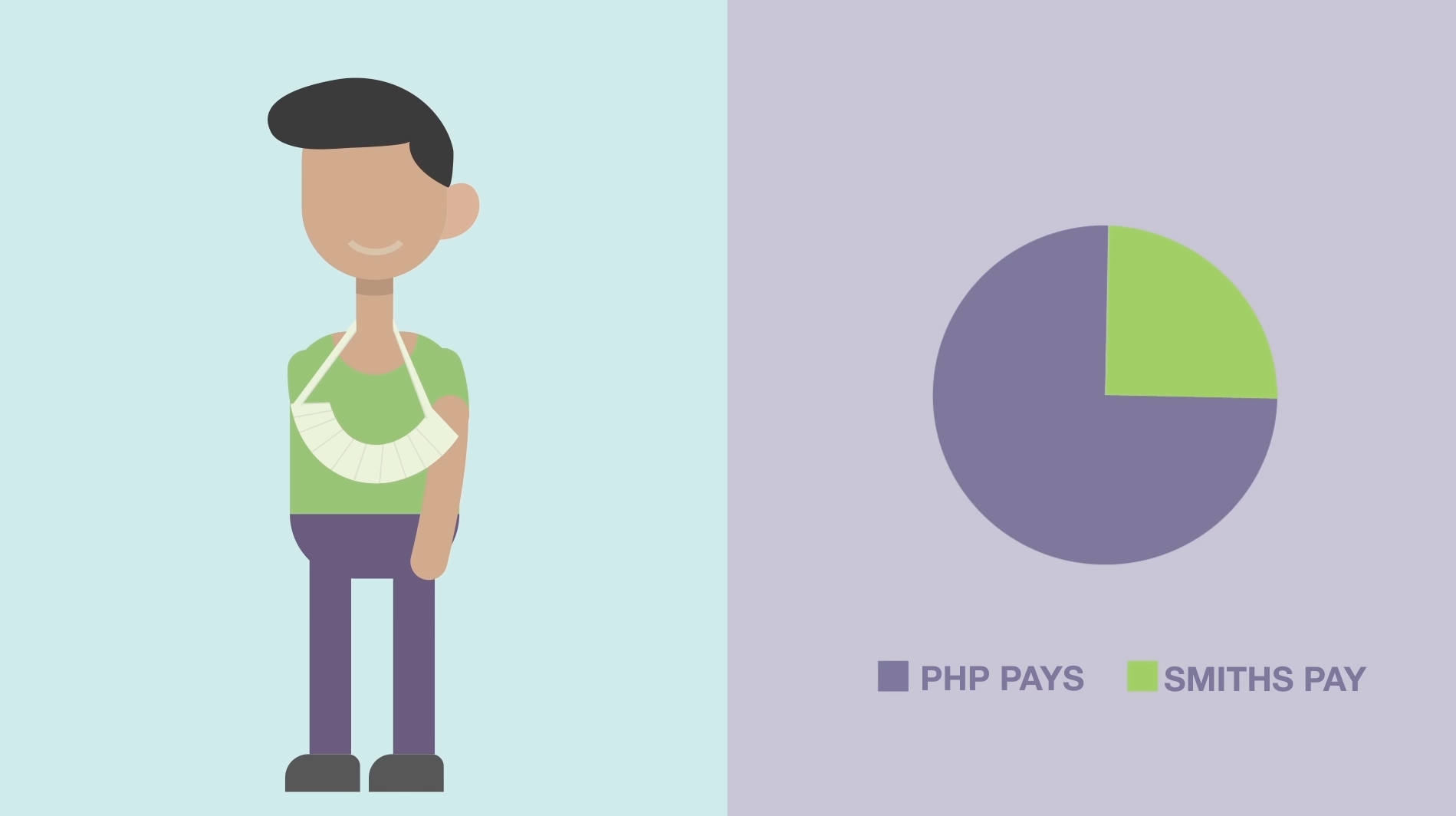When it comes to health insurance, all of the terms are clear, simple, and easy-to-understand...right? Wrong! We know health insurance can be tricky but this glossary can help.
These commonly used terms and definitions are intended to be educational and may be different from the terms and definitions in your plan. Some of these terms might not use the exact same definition in your policy or plan. Be sure to review your Summary of Benefits and Coverage for information on your specific plan or policy.
Allowed Amount
The maximum amount which can be charged for a health care service. This may be called “eligible expense,” “payment allowance" or "negotiated rate." If your provider charges more than the allowed amount for a given service, you may have to pay the difference. (See Balance Billing.)
Appeal
A request for your health insurer or plan to review a decision or a grievance again.
Balance Billing
When a provider bills you for the difference between the provider’s charge and the allowed amount. For example, if the provider’s charge is $100 and the allowed amount is $70, the provider may bill you for the remaining $30. A preferred provider may not balance bill you for covered services.
Co-insurance

Your share of the cost of a covered health care service, calculated as a percentage (for example, 20%) of the allowed amount for the service. You pay co-insurance plus any deductibles you owe. For example, if the health insurance or plan’s allowed amount for an office visit is $100 and you’ve met your deductible, your co-insurance payment of 20% would be $20. The health insurance or plan would then pay the rest of the allowed amount.
Complications of Pregnancy
Conditions due to pregnancy, labor, and delivery that require medical care to prevent serious harm to the health of the mother or the fetus. Morning sickness and a non-emergency caesarean section are not considered complications of pregnancy.
Co-payment

A fixed amount (for example, $15) you pay for a covered health care service, usually when you receive the service. The amount can vary by the type of covered health care service.
Deductible

The amount you owe for covered health care services before your health insurance or plan begins to pay for them. For example, if your deductible is $1000, your plan won’t pay anything until you’ve met your $1000 deductible for covered health care services. The deductible may not apply to all services.
Durable Medical Equipment (DME)
Equipment and supplies ordered by a health care provider for everyday or extended use. Coverage for DME may include: oxygen equipment, wheelchairs, crutches or blood testing strips for diabetics.
Emergency Medical Condition
An illness, injury, symptom or condition so serious that a reasonable person would seek care right away to avoid severe harm.
Emergency Medical Transportation
Ambulance services for an emergency medical condition.
Emergency Room Care
Emergency services you get in an emergency room.
Emergency Services
Evaluation of an emergency medical condition and treatment to keep the condition from getting worse.
Excluded Services
Health care services that your health insurance or plan doesn’t pay for or cover.
Grievance
A complaint that you communicate to your health insurer or plan.
Habilitation Services
Health care services that help a person keep, learn, or improve skills and functioning for daily living. Examples include therapy for a child who isn’t walking or talking at the expected age. These services may include physical and occupational therapy, speech-language pathology and other services for people with disabilities in a variety of inpatient and/or outpatient settings.
Health Insurance
A contract that requires your health insurer to pay some or all of your health care costs in exchange for a regular payment or premium.
Home Health Care
Health care services a person receives at home.
Hospice Services
Services to provide comfort and support for people in the last stages of a terminal illness and their families.
Hospitalization
Care in a hospital that requires admission as an inpatient and usually an overnight stay. An overnight stay for observation, however, could be considered outpatient care.
Hospital Outpatient Care
Care in a hospital that usually doesn’t require an overnight stay.
In-network Co-insurance
The percentage (for example, 20%) you pay of the allowed amount for covered health care services to providers who contract with your health insurance or plan. In-network co-insurance will almost always cost you less than out-of-network co-insurance.
In-network Co-payment
A fixed amount (for example, $15) you pay for covered health care services to providers who contract with your health insurance or plan. In-network co-payments are almost always less than out-of-network co-payments.
Medically Necessary
Health care services or supplies needed to prevent, diagnose or treat an illness, injury, condition, disease or its symptoms and that meet accepted standards of medicine.
Network
The facilities, providers, and suppliers your health insurer or plan has contracted with to provide health care services.
Non-Preferred Provider
A provider who doesn’t have a contract with your health insurer or plan to provide services to you. You’ll pay more to see a non-preferred provider. Check your policy to see if you can go to all providers who have contracted with your health insurance plan, or if your health insurance plan has a “tiered” network which would require you to pay extra to see certain providers.
Out-of-network Co-insurance
The percentage (for example, 40%) you pay of the allowed amount for covered health care services to providers who do not contract with your health insurance or plan. Out-of-network co-insurance will almost always costs you more than in-network co-insurance.
Out-of-network Co-payment
A fixed amount (for example, $30) you pay for covered healthcare services from providers who do not contract with your health insurance or plan. Out-of-network co-payments will almost always be more than in-network co-payments.
Out-of-Pocket Limit

The most you will pay during a policy period (usually a year) before your health insurance or plan begins to pay 100% of the allowed amount. This limit never includes your premium, balance-billed charges or health care your health insurance or plan doesn’t cover. Some health insurance plans don’t count all of your co-payments, deductibles, co-insurance payments, out-of-network payments or other expenses toward this limit.
Physician Services
Health care services a licensed medical physician (M.D. – Medical Doctor or D.O. – Doctor of Osteopathic Medicine) provides or coordinates.
Plan
A benefit your employer, union, or other group sponsor provides to you to help pay for your health care services.
Preauthorization
A decision by your health insurer or plan that a health care service, treatment plan, prescription drug or durable medical equipment is medically necessary. Sometimes called prior authorization, prior approval or precertification. Your health insurance or plan may require preauthorization for certain services before you receive them, except in an emergency. Preauthorization isn’t a promise your health insurance or plan will cover the cost.
Preferred Provider
A provider who has a contract with your health insurer or plan to provide services to you at a discount. Check your policy to see if you can see all preferred providers or if your health insurance or plan has a “tiered” network where you must pay extra to see certain providers. Your health insurance or plan may have preferred providers who are also “participating” providers. Participating providers also contract with your health insurer or plan, but the discount may not be as great, and you may have to pay more.
Premium

The amount that must be paid for your health insurance or plan. You and/or your employer usually pay it monthly, quarterly or yearly.
Prescription Drug Coverage
Health insurance or plan that helps pay for prescription drugs and medications.
Prescription Drugs
Drugs and medications that by law require a prescription.
Primary Care Physician
A physician (M.D. – Medical Doctor or D.O. – Doctor of Osteopathic Medicine) who directly provides or coordinates a range of health care services for a patient.
Primary Care Provider
A physician (M.D. – Medical Doctor or D.O. – Doctor of Osteopathic Medicine), nurse practitioner, clinical nurse specialist or physician assistant, as allowed under state law, who provides, coordinates or helps a patient access a range of health care services.
Provider
A physician (M.D. – Medical Doctor or D.O. – Doctor of Osteopathic Medicine), health care professional or health care facility licensed, certified or accredited as required by state law.
Reconstructive Surgery
Surgery and follow-up treatment needed to correct or improve a part of the body because of birth defects, accidents, injuries or medical conditions.
Rehabilitation Services
Health care services that help a person keep, get back, or improve skills and functioning for daily living that have been lost or impaired because a person was sick, hurt, or disabled. These services may include physical and occupational therapy, speech-language pathology, and psychiatric rehabilitation services in a variety of inpatient and/or outpatient settings.
Skilled Nursing Care
Services from licensed nurses in your own home or in a nursing home. Skilled care services are from technicians and therapists in your own home or in a nursing home.
Specialist
A physician specialist focuses on a specific area of medicine or a group of patients to diagnose, manage, prevent, or treat certain types of symptoms and conditions. A non-physician specialist is a provider who has more training in a specific area of health care.
UCR (Usual, Customary and Reasonable)
The amount paid for a medical service in a geographic area based on what providers in the area usually charge for the same or similar medical service. The UCR amount sometimes is used to determine the allowed amount.
Urgent Care
Care for an illness, injury or condition serious enough that a reasonable person would seek care right away, but not so severe as to require emergency room care.
We work, live, and play in the same communities as you. Our commitment to improving your quality of life runs deep – think of us as the health insurance company next door.
Learn MoreWhen we say we're here to help, we really mean it. PHP is a no-robot zone – that means when you contact us, someone from our Indiana office will be ready and happy to assist you.
Let's talk